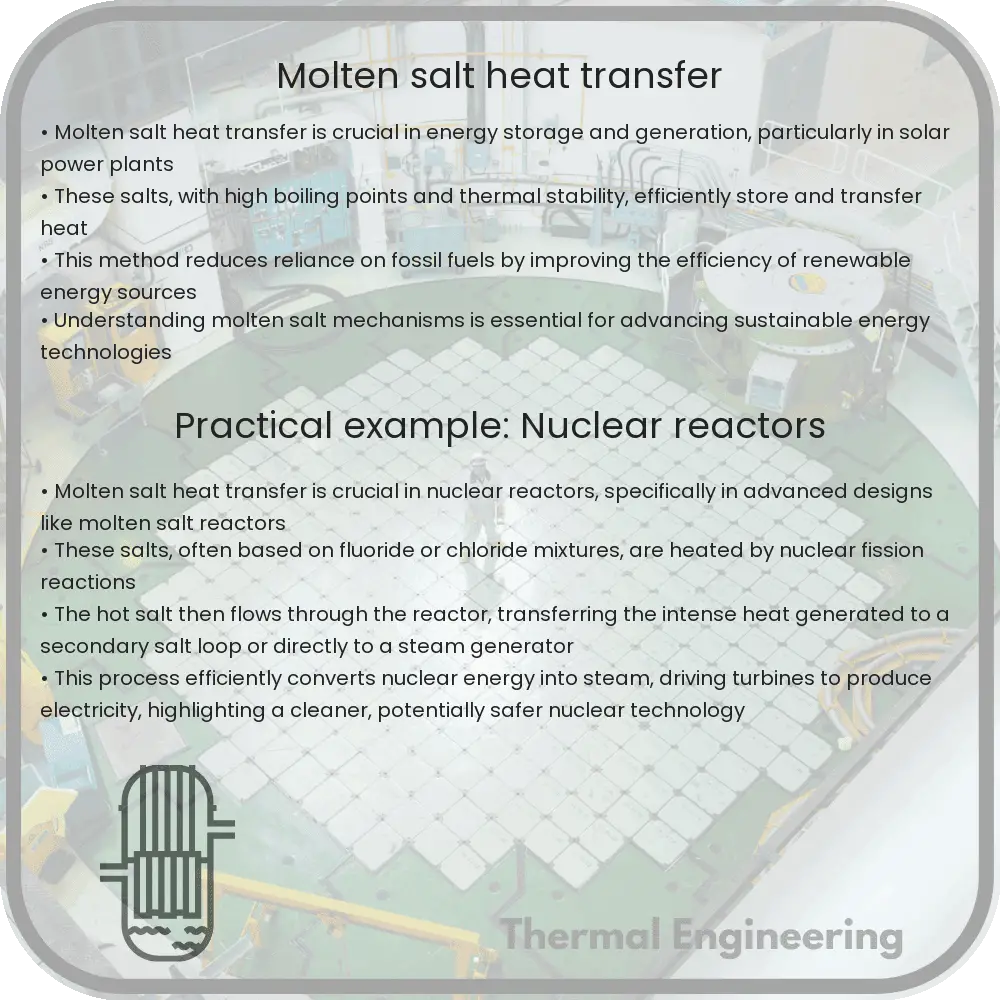Explore the uses, benefits, and challenges of molten salt heat transfer technology in industrial and energy sectors.

Understanding Molten Salt for Heat Transfer
Heat transfer is a fundamental aspect of engineering, influencing everything from industrial processes to everyday appliances. Molten salt heat transfer technology represents an innovative approach, offering efficient and scalable solutions particularly in power generation and industrial applications. This article explores how molten salts are used in heat transfer, their benefits, challenges, and typical applications.
What Are Molten Salts?
Molten salts are simply salts that turn into a liquid state at elevated temperatures. Commonly used salts include sodium nitrate, potassium nitrate, and calcium nitrate. These materials exhibit excellent thermal storage capabilities and have high boiling points and low vapor pressures, which make them ideal for use as heat transfer fluids.
Properties of Molten Salts
- High Boiling Points: Most molten salts have boiling points well above 500°C, allowing them to operate at high temperatures without transitioning into a gaseous state.
- Good Heat Capacity: They can store and transfer large amounts of heat energy, which is crucial for thermal storage systems.
- Low Vapor Pressure: Low vapor pressures reduce the risk of the salt vaporizing at high temperatures, thus ensuring safer operating conditions and less structural stress on containment systems.
- Chemical Stability: Molten salts remain chemically stable at elevated temperatures, which is essential for long-term applications.
Applications of Molten Salt Heat Transfer
- Concentrated Solar Power (CSP) Plants: Molten salts are widely used in CSP plants to store and transfer solar energy. They absorb heat during daytime and can store it efficiently until electricity is needed, including during the night.
- Nuclear Power: Advanced nuclear reactors, such as molten salt reactors, utilize molten salt both as a coolant and a fuel solvent. These reactors benefit from the high boiling point and thermal conductivity of molten salts.
- Industrial Processes: Various industrial processes require high-temperature operations. Molten salts are used to transport heat to chemical reactors, smelters, and other equipment.
Challenges with Molten Salt Heat Transfer
Despite the benefits, there are several challenges associated with using molten salts in heat transfer applications:
- Corrosivity: Molten salts can be highly corrosive to metals used in heat exchangers and storage tanks, which necessitates the use of corrosion-resistant materials.
- Freezing Point: Salts have high freezing points, which can lead to solidification if the temperature drops too low. This can damage equipment and disrupt process operations.
- Maintenance: The system requires careful maintenance to prevent and manage the deposition of salts, which can affect heat transfer efficiency and the overall operation of the system.
Future Outlook
The use of molten salts in heat transfer continues to be a subject of research and development. Innovations focus on developing new salt formulations with lower melting points and enhanced thermal properties. Additionally, engineers and scientists are working on advanced materials that can withstand the corrosive nature of molten salts, reducing maintenance costs and extending the lifespan of equipment.
Molten salt heat transfer technology holds significant promise for sustainable and efficient energy management in various sectors. As challenges are addressed, this technology is expected to play a pivotal role in the future of energy and industrial processes.